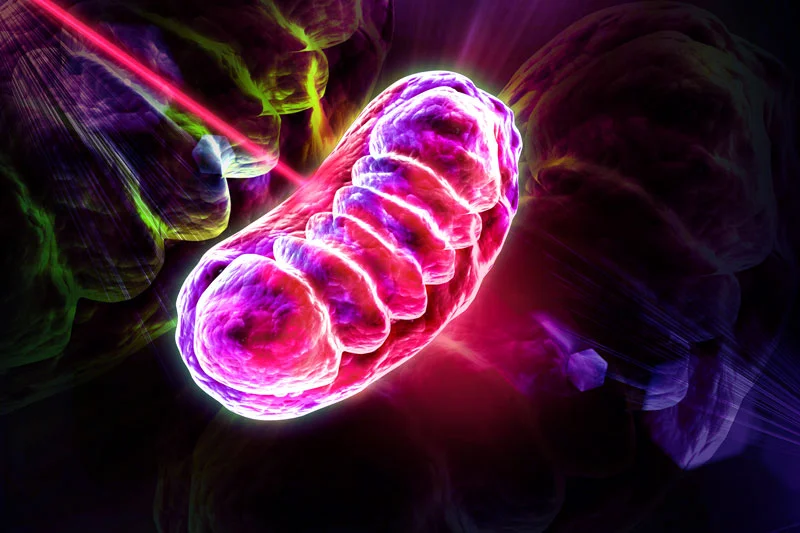Not known Details About Photobiomodulation
Wiki Article
Facts About Photobiomodulation Revealed
Table of ContentsThe Basic Principles Of Photobiomodulation The Basic Principles Of Photobiomodulation Facts About Photobiomodulation RevealedThe smart Trick of Photobiomodulation That Nobody is Talking About
Laser therapy is a medical treatment that makes use of focused light to boost a process called. During PBM, photons get in the tissue and interact with the cytochrome c complex within mitochondria. This communication sets off a biological waterfall of events that leads to a rise in mobile metabolic rate, which can along with increase the recovery process.There is consensus that the application of a healing dose of light to damaged or inefficient cells brings about a cellular reaction mediated by mitochondrial systems. Photobiomodulation. Research studies have shown that these modifications can impact discomfort and swelling, as well as, tissue repair
Changes in ATP, responsive oxygen types and nitric oxide follow light absorption by Cc, O. These impacts are redox state and dosage dependent.

The Ultimate Guide To Photobiomodulation
PBM tools have actually been gotten rid of for advertising and marketing by FDA with the Premarket Notification/510( k) procedure as adjunctive tools for the temporary relief of pain. These clearances were based upon the discussion of scientific information to sustain such insurance claims (Photobiomodulation). In this treatment, a light is placed near or touching the skin, permitting the light energy (photons) to permeate tissue where it interacts with chromophores located in cells causing photophysical and photochemical adjustments that bring about alterations at the molecular, cellular and cells degrees of the bodySurprisingly, current study shows that light can improve performance in regular cells and cells. The prospective applications of PBMT are countless and are being explored experimentally at the fundamental science, pre-clinical and scientific degree. The present professional usages are for the relief of pain and swelling and the therapy of sporting activities injuries.

The treatment criteria and number of sessions needed for PBMT are reliant upon area and cause. PBMT usually requires more than one therapy for optimum discomfort alleviation. It might take several treatments for the outcomes to end up being evident. reports that it can take anywhere from 8 to 30 sessions for a treatment to be totally reliable, and some individuals find it required to go through look these up therapy two to four times weekly.
Not known Facts About Photobiomodulation
Therapy parameters for PBMT were initially developed making use of cells artificial insemination and in little pet designs. These therapy specifications typically had a low irradiance and fluence and functioned well for cutaneous applications. However when clinicians began to utilize PBMT to treat structures that lay deeper in the body, they made use of these criteria with adverse outcomes.
We currently comprehend that these unfavorable studies were due to incorrect gadget and therapy specifications for transcutaneous therapy of deeper frameworks. Recent advancements in laser therapy tools and more study into the proper does have actually substantially improved the results of PBMT. For dealing with deep cells, the wavelength of light made use of determines the depth of penetration right into a tissue.
It is crucial that a medical professional utilizes the suitable wavelength of light and specifications to deal with a problem. One wavelength and one set of therapy parameters will not be effective for all conditions. Adverse adverse effects have not been reported from the use of PBMT (Photobiomodulation). Updated June 27, 2016Juanita j
Light treatment is a non-invasive therapy that works by boosting the capacity of the cell to develop energy (ATP) to recover the location being dealt with. Because of this, it can decrease swelling, swelling, and discomfort in the location. Study in this area is broadening, with more in-depth research study papers linked listed below for those that want to learn a lot more.
What Does Photobiomodulation Do?
In the first experiment, Dr. Endre Mester, made use of cut rats and observing exactly how the laser affected their capacity to expand hair compared to the team that was not receiving LLLT. He located that the group of mice obtaining LLLT were able to grow their hair back much more quickly than the team of computer mice that didn't get LLLT (Hoon C, et alia; 2012).This therapy is termed by doing this to set apart the difference between the lasers some professions make use of to reduce (eg. in surgical procedures, or oral procedures). Low-level light therapy is painless, non-invasive therapy. It is made use of to lower swelling, swelling, and chronic joint problems, minimize pain and increase injury recovery of you could try here nerves and tissues (Hoon C, et al; 2012).
LLLT has a biphasic reaction, implying that reduced dosages are normally attended be a lot more helpful than greater dosages. That being said, doses greater or lower than the optimal dosage does not impact (Hoon C, et al; 2012). Because of this, it can be difficult to have researches on LLLT with a lot of criteria.
Some firms integrated the two (LED and laser) to offer a much more all-round therapy since lasers can permeate deeper than LED and infrared light (Norman Doidge, The Brain's Method of great post to read Healing, 2015). Throughout treatment, the area that is being dealt with is revealed to LED light from a Bio, Flex Laser, which goes to 660 nm wavelength, complied with by infrared light at 830-840 nm wavelength.
Report this wiki page